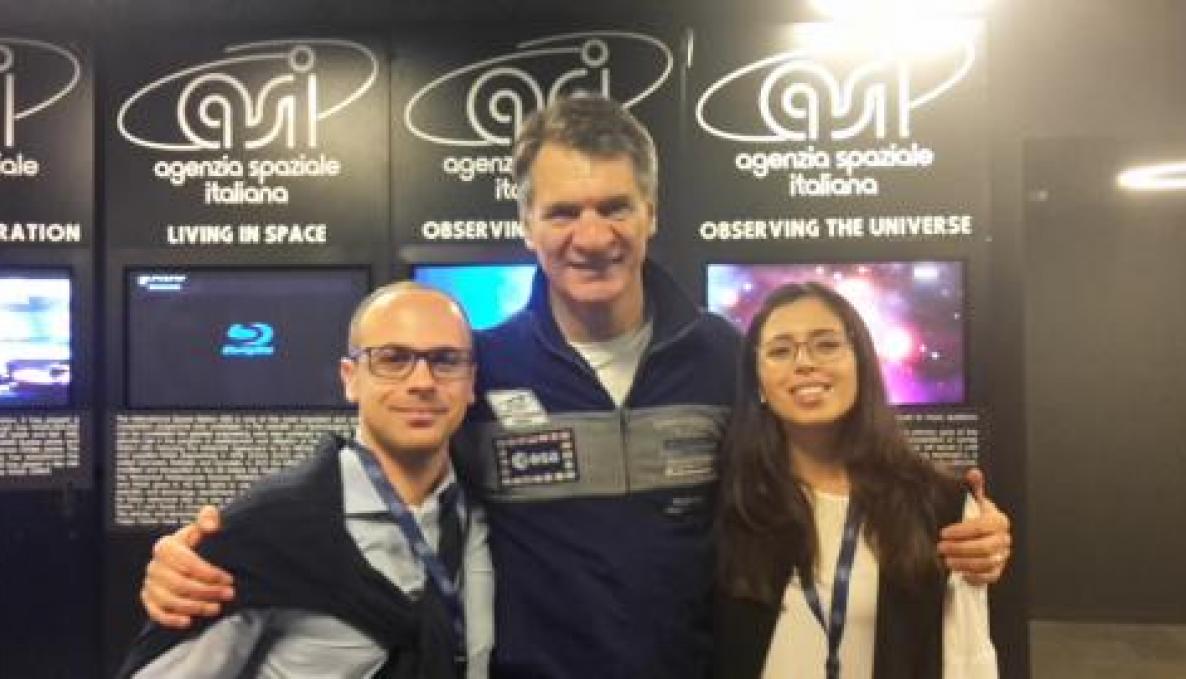the “Nanoros” project for Nanotechnology applications in Space: preventing muscle deterioration in orbit could tackle muscle wasting diseases on Earth

Preventing muscle degeneration to which astronauts are being subjected means identifying targets and developing strategies to tackle muscle-degenerative diseases on Earth. This is the goal of the "Nanoros" project, which researchers of Sant'Anna School BioRobotics Institute are working on at headquarters of the Italian Institute of Technology MicroBioRobotics Center. The "Nanoros" project was presented at the Italian Space Agency headquarters (ASI), to identify scientific and technological challenges of the new space mission with the Italian astronaut Paolo Nespoli.
"Nanoros" has been selected by the Italian Space Agency (ASI) and is intended to bring to space, for the first time, the cerium oxide nanoparticles "nanoceria"; an advanced smart material which proved to have both pro-oxidant and anti-oxidant effects on different cell systems. Astronaut Paolo Nespoli during next ASI mission will be able to study how the material reacts to the space environment, and Nanoros project partners, including the company Kayser Italy - Livorno will provide advanced industrial support.
The "Nanoros" project will also focus on nanotechnology applications. In particular, the effects of nanoparticles of cerium oxide ("nanoceria") will be investigated. The advanced smart material has been studied in biomedical research to prevent those diseases whose onset is linked to increased production of toxic molecules called free radicals. The "nanoceria" antioxidant effects will be tested on a model of differentiated muscle cells in microgravity conditions and in the presence of strong cosmic rays. Bone-density loss and heavy doses of radiation are in fact the largest problems that are faced by astronauts during their long-term space travel.
“Nanoceria" has already shown promising results in the treatment of Parkinson's disease and obesity. The experiment related to the Nanoros project will be conducted by the Italian astronaut Paolo Nespoli on the space station, as an orbiting laboratory, with the financial support of the Italian Space Agency and advanced research equipment developed by the space industry company Kayser Italy- Livorno.
Gianni Ciofani, associate professor at the Polytechnic University of Turin, affiliate professor at Sant’Anna School BioRobotics Institute, acts as the “Nanoros” project coordinator. The research team includes Attilio Marino, neurobiologist, and Giada Gianchi, biotechnologist, both researchers of Sant’Anna School Centre for Micro-BioRobotics IIT in Pontedera.
“The ‘Nanoros’ experiment – Gianni Ciofani tells the Agenzia DIRE – consists of testing the nanoceria antioxidant effects in microgravity conditions – as nanoparticles are efficient free radical scavengers. Cerium oxide nanoparticles known as nanoceria are considered as a potent therapeutic option for the treatment of ROS mediated disorders like neurodegenerative disorders. The small-molecule antioxidants neutralize the ROS in a process called radical scavenging and carry them away. The main antioxidants in this category are vitamin C, vitamin E, carotenoids, and glutathione. Engineered nanoparticles have the potential to revolutionize treatment of many diseases which require the synthesis of nanoceria with biocompatibility so as to enhance its therapeutic potential ”.
“We are investigating – says Gianni Ciofani - the effectiveness of using cerium oxide nanoparticles to counter muscle changes and related problems since a long-term exposure to microgravity causes oxidative stress and decreased muscle function. Reported chemical evidence suggests that dietary antioxidants help in the oxidative damage prevention. Astronauts need a balanced diet and a complete multivitamin regimen, as well as other dietary supplements, such as omega-3 fatty acids and plant-derived antioxidant formulas to fight against oxidative stress. As studies and tests continue, we are further researching the potential applications of nanoparticles antioxidant effects where each particle must therefore be individually characterized in a biological setting: understanding the reaction mechanisms can help the development of novel, single dose antioxidants”.
Click here to the Nanoros project official blog
Cover photo, from left to right: Attilio Marino, Post Doctoral Fellow at Center for Micro-Biorobotics of Istituto Italiano di Tecnologia IIT@SSSA - Smart Nanomaterials, coordinated by Gianni Ciofani; Paolo Nespoli; Alice Rita Salgarella, PhD student at BioRobotics Institute - Sant'Anna School, the “Surgical Robotics and Allied Technologies” team coordinated by Arianna Menciassi.



